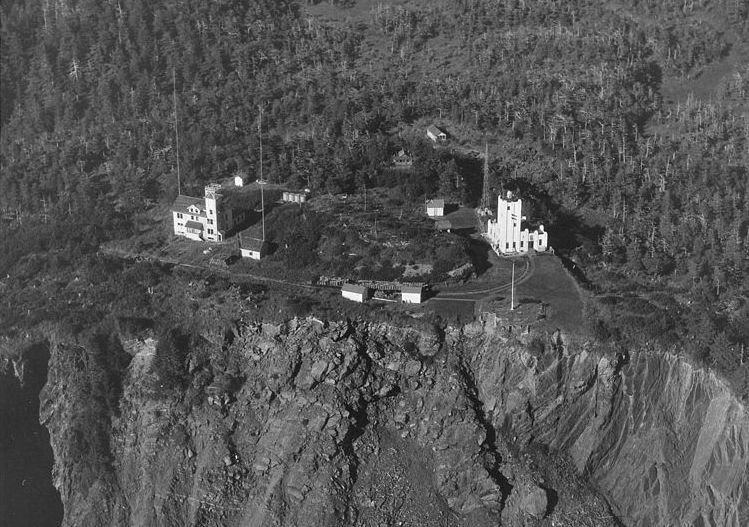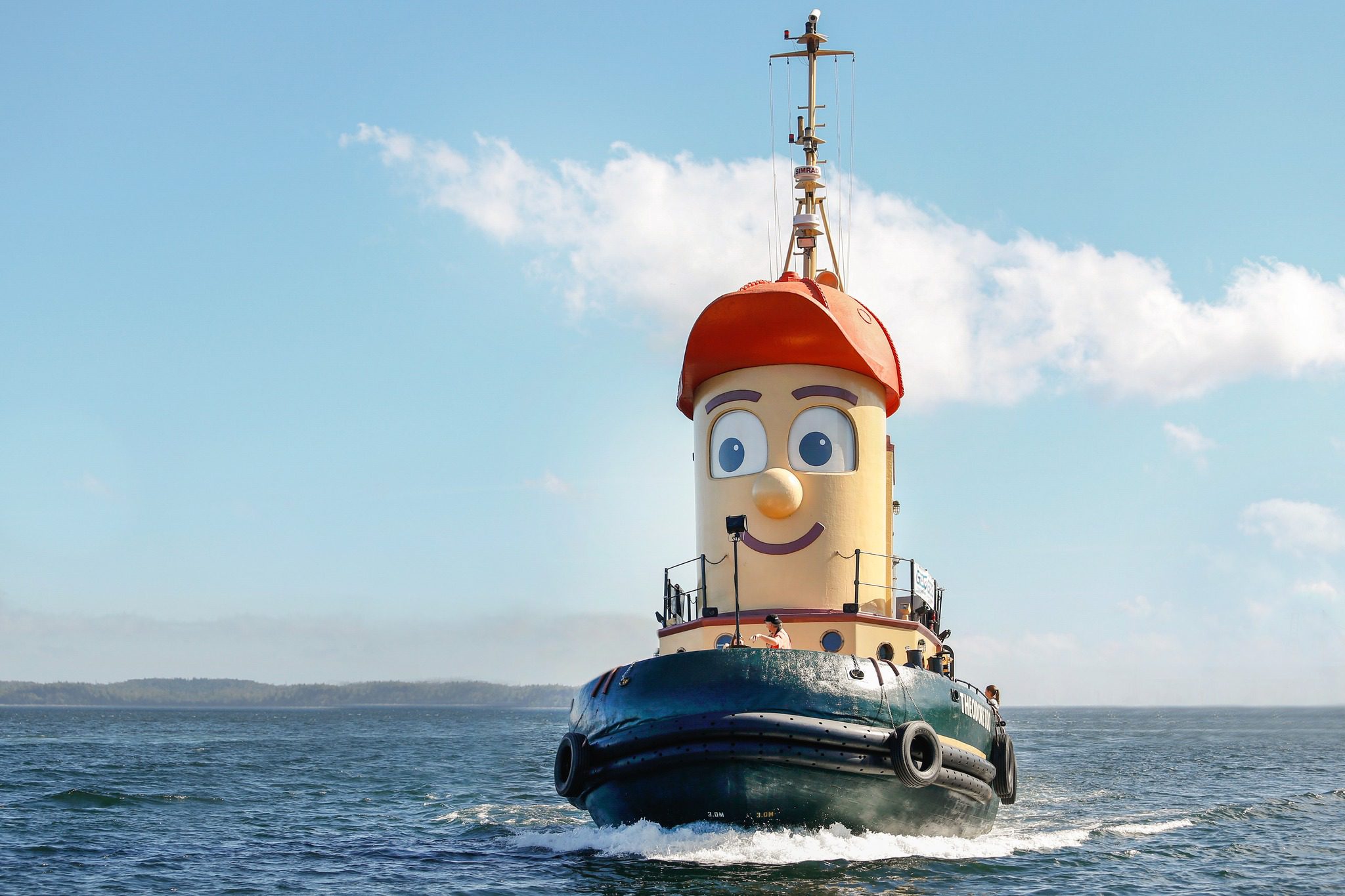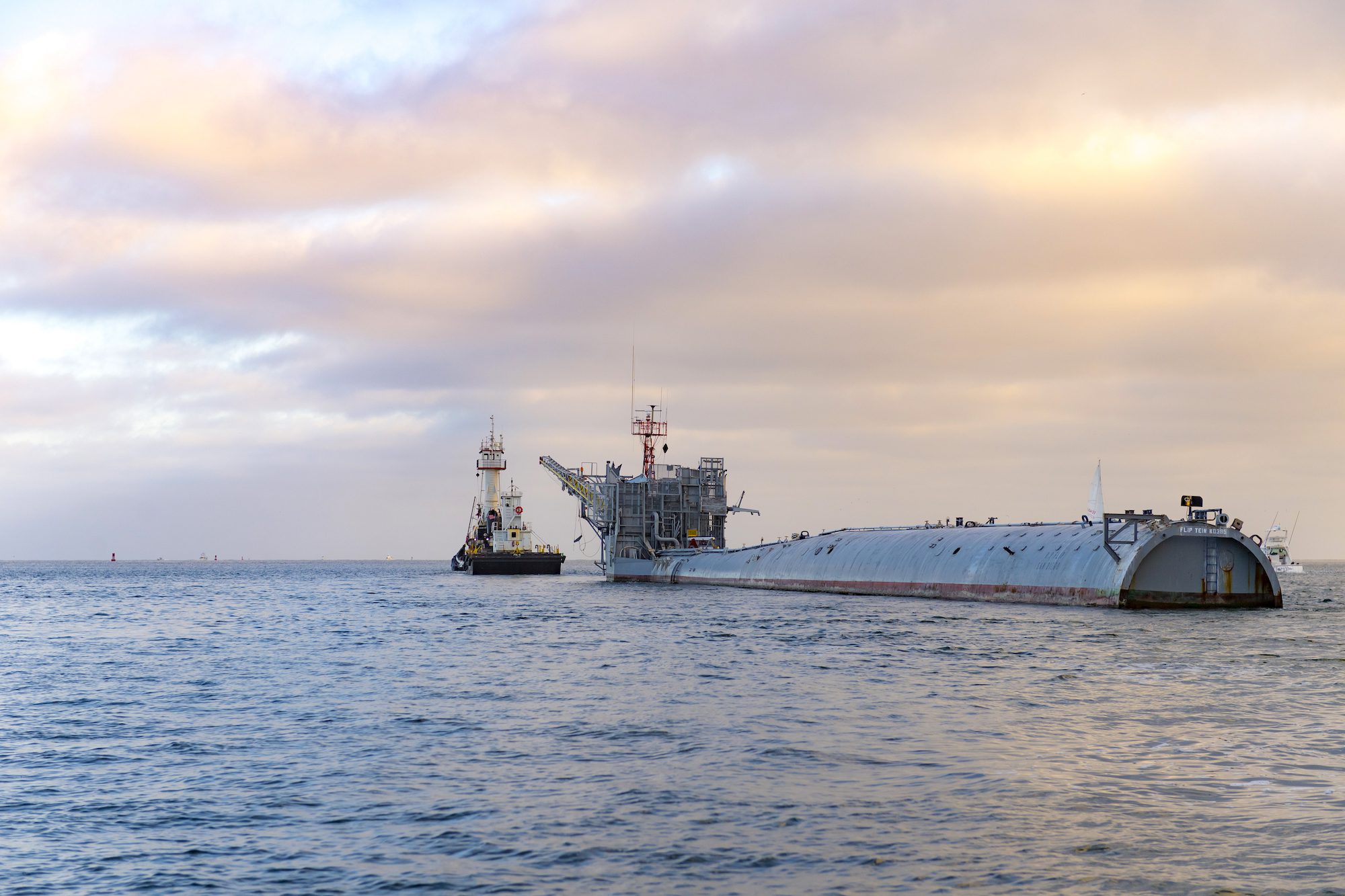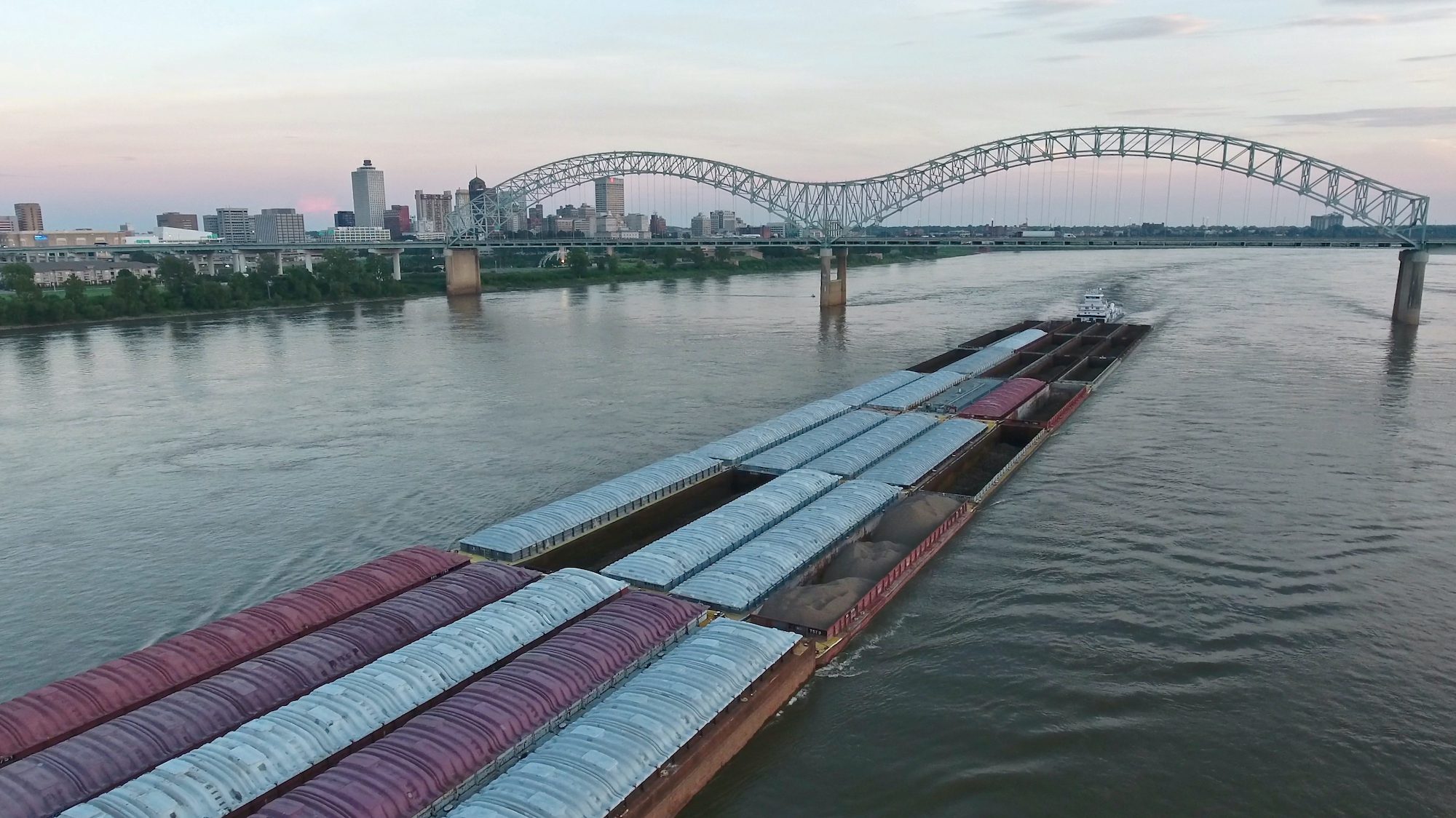Cape Hinchinbrook, Alaska, Lightstation pictured in 1948. U.S. National Archives Photo
Alaska’s Hinchinbrook Island Light sits on a high cliff 235 feet above the ocean, at the SW corner of Hinchinbrook Island at the entrance to Prince William Sound. At this height, the horizon is 18 miles away and on a clear night, the light’s 15s flashing white beacon can be seen far out into the Gulf of Alaska.
When you stand at the light you hear the ocean surf far below, winds rustling through the stands of trees, scrub, and bushes, and sounds of seagulls and wildlife. It is an amazingly peaceful place. If you close your eyes and let the sunshine on your face you find yourself transported to a faraway different world.
“Sir, we are going up to the light now” shouts the BM3, who is busy unlocking the lighthouse door.
“Roger that, I am right behind you” replies the Ensign.
He and a group of Coasties from the USCGC Sweetbrier, a 180-foot ocean-going buoy tender homeported in Cordova AK, have hiked up to the light for its semiannual servicing.
There is a helo-pad adjacent to the light, and when helos are available and the weather allows, Coasties come out by air to service the light. But most often this lighthouse, and most other lighthouses and aids to navigation in Prince William Sound, are serviced by the Sweetbrier’s crew.
Reaching Hinchinbrook Light is an adventure, involving hiking up several miles of rough trails through the Island’s woods and rocky terrain. Hinchinbrook Island, like most of Alaska and Prince William Sound, is uninhabited. It is pristine, untouched and raw.
Before the Alaska oil pipeline was built to Valdez, and the Exxon Valdez then grounded on Bligh Reef, few people knew Prince William Sound existed. Only Coasties servicing aids to navigation and fishermen were privileged to sail these magical waters.
On this day the Sweetbrier has anchored in 40 fathoms in Port Etches, a secure bay on the north side of Cape Hinchinbrook. The clear cold waters of Prince William are brilliant blue-green. You can see the ship’s anchor chain reaching far below the surface. If this were the Caribbean you would want to jump in and swim down the chain to the ocean floor.
Once anchored the Sweetbrier’s 30-foot motor lifeboat (MLB) is filled with tools, gear, and the shore party.
“Lower Away!” shouts the MLB coxswain, and slowly the rope falls payout and lowers the heavy surfboat to the bay’s calm waters. The wondrous silence in the anchorage is broken as the surfboat’s diesel engine comes to life. Human presence in this environment is rare.
“Cast off the sea-painter” shouts the coxswain and the surfboat heads toward the protected beach inside English Bay. At low tide, there is sufficient beach to ground out the MLB and offload the gear and maintenance team. Once ashore the Coasties begin the slow but steady climb up to the light, following a narrow, single file trail.
There is no rush, no need to move quickly. They have allotted all day to accomplish this maintenance, and the hike up to the light, though arduous and not something most mariners are trained to do, is a welcomed task. A day of hiking in the woods of Alaska, up to a site where you can see far out into the Gulf of Alaska & Pacific Ocean, is a rare privilege.
They stop along the way to gaze at waterfalls, flowing creeks, massive trees, and huge rock outcroppings, and then, after several hours, they emerge from the woods to a breathtaking sight, the vast expanse of the Pacific Ocean. If you were to sail due south from this spot, the first land is Hawaii, 2,800 miles away. Everyone stops and stares out, the clear air and wind makes your eyes water. Even for those who have previously climbed to this light, it is an awe-inspiring, breathtaking experience.
“Ok, we probably need to get to work”, someone finally says, breaking the silence.
Hinchinbrook Light, like all lighthouses, shines its light day and night. Every 15 seconds it sends a beam of light out into the ocean to aid mariners. Lighthouses are constant, dependable, reassuring and unfailing. When mariners return from the sea it is that re-assuring beacon of light provided by lighthouses that provide comfort and peace. Electronics do not provide the same feeling of security and stability that a visual beacon of light offers.
Maintaining a lighthouse is more than just keeping a piece of machinery working properly. It is so much more than keeping a light bulb illuminated. Maintaining a lighthouse fulfills a solemn duty to other mariners, providing an assurance, a reassurance that others are looking out for you, caring for your safe return to port.
After a few hours of lubricating gears, replacing bulbs, testing voltages, and changing out emergency batteries the team secures the lighthouse, takes a final look over the vast expanse of the Pacific Ocean, and head back down the trail toward their ship.
This team have done their work, ensured that mariners, most unknown to them, will have a light to guide them home, through rain, fog, storms, and snow. It is a basic and simple task, maintaining lights, but one which requires a sense of duty, attention to detail, assumption of responsibility, and pride in execution.
Few will know they were here today, but for this team of Coastguardsman, they have preserved the trust between mariners, to care and look out for each other. They are a “Band of Brothers” and so they smile and banter happily on the way back to their ship.

 Join The Club
Join The Club











